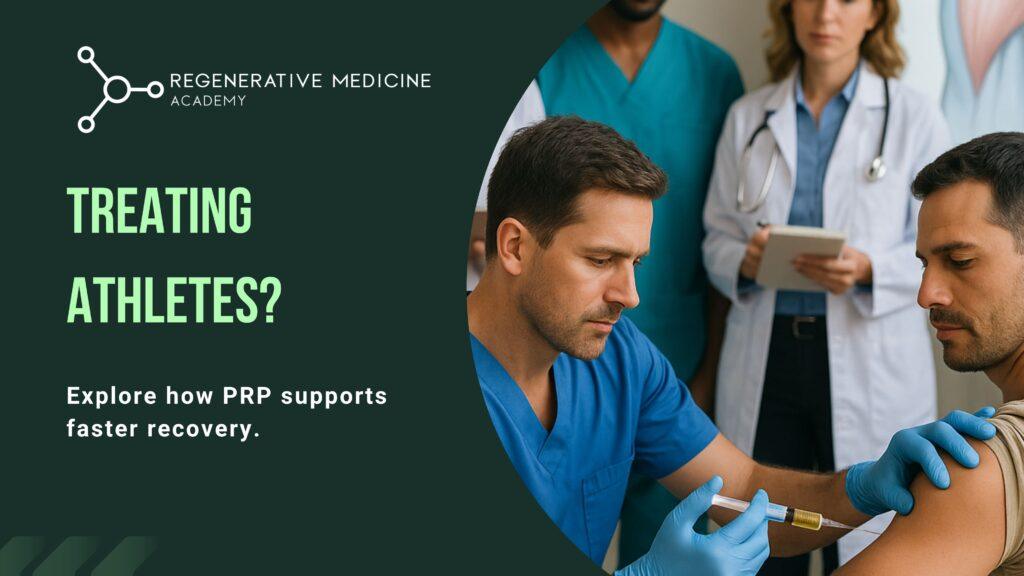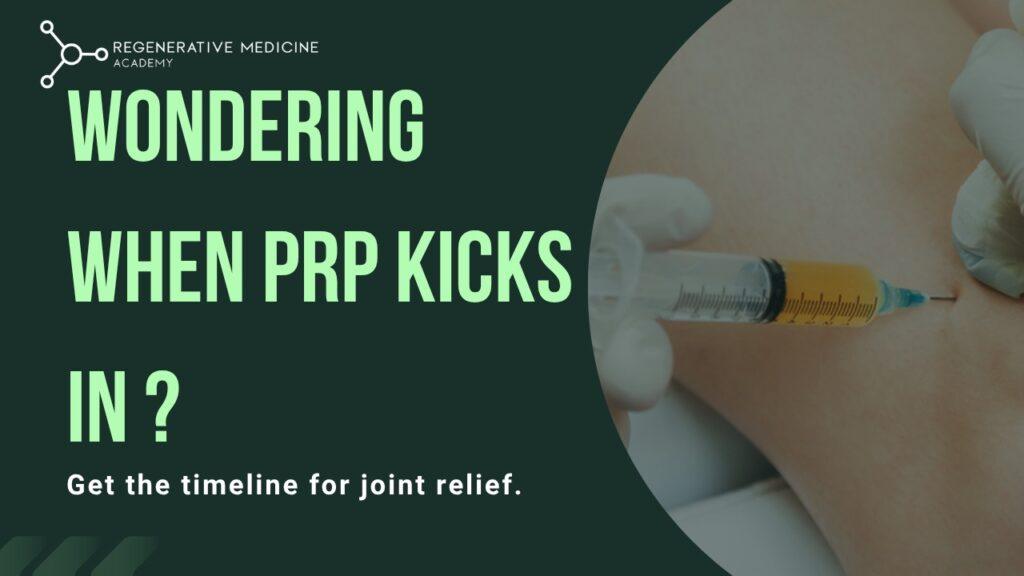Feeling Stuck at the Start? You’re Not Alone
Stepping into private practice or expanding your clinical services as a new medical professional can be thrilling—but let’s be honest, it’s also overwhelming. Especially when you’re considering offering Platelet-Rich Plasma (PRP) treatments, which are in high demand but require both skill and certification.
Maybe you’ve seen peers successfully add PRP to their services. Maybe patients are asking about it already. But you’re left wondering:
- Where do I even begin with PRP training?
- What certifications actually matter?
- How much will this cost me in time and money?
If these questions sound familiar, you’re in the right place. This guide walks you through how to become certified in PRP, what to look for in a course, and how to move forward with confidence.
Why PRP Certification Matters More Than Ever
Before jumping into the process, it’s important to understand why certification is more than just a checkbox.
PRP procedures—used in aesthetics, orthopedics, pain management, and hair restoration—require specific technical knowledge. The right training:
- Ensures safe and effective treatments
- Helps you comply with legal and clinical standards
- Builds patient trust from day one
- Shortens your learning curve and protects your professional credibility
Even if you’re an experienced injector or clinician, PRP involves unique protocols and biological handling skills. That’s why learning how to become certified in PRP the right way can make a real difference in your clinical outcomes and long-term patient retention.
The Rising Demand for PRP Treatments
Why invest in PRP now? Data shows:
- The global PRP market is projected to exceed $1 billion by 2030, according to multiple market research reports.
- Aesthetic PRP treatments like hair restoration and facial rejuvenation are now mainstream offerings in many med spas and private practices
- Regenerative orthopedic PRP is gaining traction as a non-opioid, non-invasive option for managing musculoskeletal conditions
This rise in demand makes it an opportune time to understand how to become certified in PRP, so you’re not left behind in a growing and profitable sector.
Step-by-Step: How to Become Certified in PRP
Here’s a practical, no-fluff roadmap to earning your PRP certification and getting clinic-ready.
1. Choose a Recognized PRP Training Program
The first step in how to become certified in PRP is selecting an accredited provider. Look for PRP training courses that:
- Are taught by experienced medical professionals
- Include both theoretical and hands-on learning
- Offer post-course support and certification
- Are compliant with U.S. medical regulations (FDA guidance, HIPAA, etc.)
Choose courses that address both aesthetic and medical applications if you want flexibility in your offerings.
2. Verify Accreditation and Instructor Credentials
Not all training is created equal. Reputable programs will list:
- Accrediting bodies (like ACCME or AANP) or CE/CME approvals
- Faculty bios and clinical background
- Course objectives and expected competencies
Many early-career professionals start with trusted organizations like Regenerative Medicine Academy, which offers physician-led, hands-on instruction tailored to clinical application—not just theory.
This step is essential for those wanting to know how to become certified in PRP in a way that meets both medical and business needs.
3. Complete Training + Practical Evaluation
Expect to participate in:
- Pre-course modules (online) to understand PRP science and legal frameworks
- In-person clinical labs or workshops using live models or simulations
- Post-course evaluations or practical checklists for skill validation
Upon completion, you’ll receive a certificate of training that can be displayed in your clinic and referenced for insurance, credentialing, or malpractice protection.
Time and Cost Breakdown: What to Expect
Let’s get real about what you’re investing and what you’ll get back.
Time Commitment
- Online education: 4–6 hours, self-paced
- Hands-on training: 1–2 days in person
- Post-training setup: 1–2 weeks for purchasing equipment and offering services
You can be trained, certified, and ready to treat in under a month if you follow an efficient path.
Costs
- PRP training courses: $1,200 – $3,500
- Centrifuge and PRP kits: $1,000 – $5,000 (startup investment)
- Optional: Equipment upgrades, staff training, insurance riders
While the startup cost might feel like a hurdle, a single PRP patient can cover that investment in just a few sessions. For clinicians who understand how to become certified and market it smartly, ROI is both quick and sustainable.
PRP Training Benefits Beyond the Certificate
Getting certified in PRP is not just about adding another treatment to your menu. It’s about positioning yourself at the cutting edge of regenerative therapies.
Long-term benefits include:
- Diversified income streams from cash-pay patients
- Enhanced patient trust and clinical authority
- Greater independence if opening a private practice
- Competitive edge in aesthetics, sports med, or pain care
.
💡 Did You Know? Some providers offer bundle courses that combine PRP, microneedling, and other regenerative techniques—ideal for those building a one-stop regenerative clinic.
Common Pitfalls to Avoid
Here’s what to watch out for when picking your course or trying to implement PRP:
- No live training: Hands-on instruction is non-negotiable
- No mention of centrifuge calibration: You’ll need to be trained on PRP equipment
- Vague “certifications” with no backing or credentials
- No clinical protocols or treatment algorithms provided
Remember: credibility matters. If you’re serious about learning how to become certified in PRP and applying it safely, be selective and ask the tough questions before enrolling.
FAQ: What Early-Career Professionals Want to Know
Q: Can I perform PRP if I’m a nurse practitioner or PA?
Yes, in most states, nurse practitioners and physician assistants can offer PRP services under appropriate collaborative agreements or protocols. Always check your state board’s scope of practice.
Q: What equipment do I need post-certification?
- A reliable PRP centrifuge (FDA-cleared preferred)
- Sterile PRP kits
- PPE and sharps disposal supplies
- Injection tools (microcannulas or needles)
Most PRP training courses include equipment guidance, but be sure to ask.
Q: How soon can I start treating patients?
You can start immediately after your training—especially if you’ve completed a course with hands-on certification. Some providers, like Regenerative Medicine Academy, even offer starter kits and post-training support to help you launch faster.
Take the Next Step with Confidence
You don’t need to wait until you “feel ready.” Becoming confident in PRP practice starts with taking a proven, practical first step—completing an accredited certification.
Whether you’re an MD, DO, NP, PA, or RN looking to build a niche or scale your clinic, the PRP market is growing and ripe with opportunity. And the longer you wait, the more crowded that space becomes.
For any early-career clinician wondering how to become certified in PRP and actually succeed with it—this is your time.
Ready to Get Certified? We’re Here to Help
At Regenerative Medicine Academy, we specialize in PRP training courses built for early-career professionals who want more than just the basics. Our programs combine real-world clinical application with expert instruction, ensuring you finish not just certified—but fully prepared.👉 Explore upcoming PRP certification dates and start your journey today.
Visit Regenerative Medicine Academy to learn more and reserve your spot.



